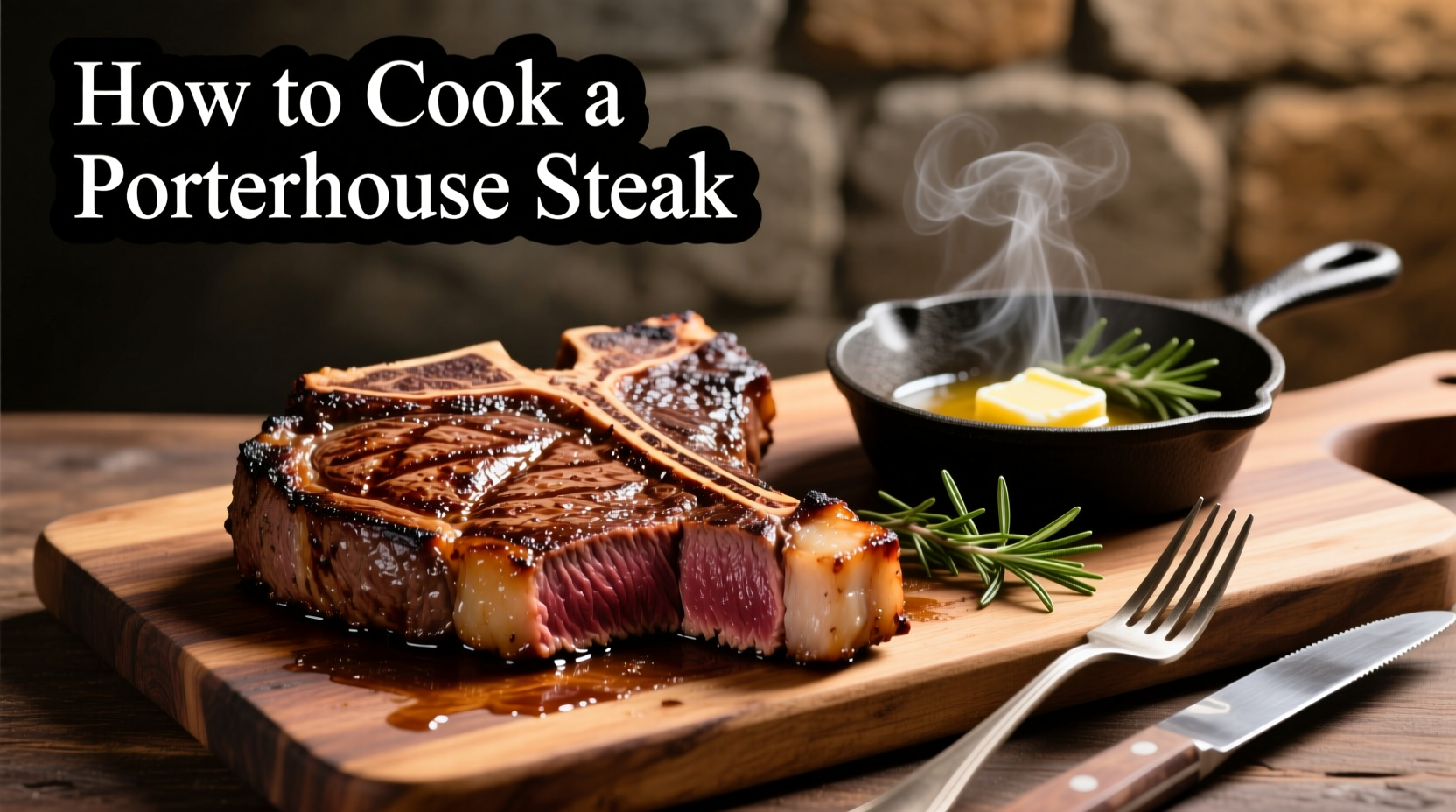Perfectly cook a porterhouse steak by bringing it to room temperature, seasoning generously with coarse salt and pepper, searing at 450°F for 4-5 minutes per side, then finishing in a 375°F oven to your desired internal temperature (125°F for medium-rare). Rest for 10 minutes before slicing against the grain.
Your Complete Guide to Restaurant-Quality Porterhouse at Home
Nothing beats the satisfaction of cooking a magnificent porterhouse steak perfectly in your own kitchen. This dual-textured cut—with both tenderloin and strip steak separated by a T-bone—delivers an unparalleled dining experience when prepared correctly. In just 45 minutes, you can achieve restaurant-quality results that impress even the most discerning steak lovers.
Why This Method Works Every Time
The porterhouse's unique composition requires careful attention to cooking technique. Unlike uniform cuts, this steak features two distinct muscles with different fat contents and densities. Our tested approach balances the tenderloin's delicate nature with the strip steak's robust character, ensuring neither overcooks while developing that coveted crust.

Step 1: Selecting and Preparing Your Steak
Start with a USDA Prime or Choice grade porterhouse, at least 1.5 inches thick with abundant marbling. Thickness matters—thinner cuts overcook before developing proper crust. Allow your steak to sit at room temperature for 45-60 minutes before cooking. This critical step ensures even cooking throughout the thick cut.
Pat the steak completely dry with paper towels. Moisture is the enemy of proper searing. Generously season all sides with coarse kosher salt (1 teaspoon per pound) and freshly cracked black pepper. For optimal flavor development, consider dry-brining by salting 1-2 hours before cooking and refrigerating uncovered.
Step 2: Searing for Maximum Flavor
Preheat your oven to 375°F. Heat a heavy cast-iron skillet or carbon steel pan over medium-high heat until smoking hot (about 5 minutes). Add high-smoke point oil like avocado or grapeseed oil—just enough to coat the bottom.
Place the steak in the pan away from you to avoid oil splatter. Press gently to ensure full contact. Sear undisturbed for 4-5 minutes until a deep brown crust forms. Flip using tongs and sear the other side for another 4-5 minutes. Rotate the steak 90 degrees halfway through each side for attractive cross-hatch marks.
| Cooking Method | Best For | Temperature Control | Crust Development |
|---|---|---|---|
| Cast Iron Skillet + Oven | Porterhouse (1.5"+ thick) | Excellent | Superior |
| Gas Grill | Outdoor cooking | Good | Very Good |
| Sous Vide + Sear | Precision cooking | Exceptional | Good (requires finishing) |
| Thin Steaks (<1") | Quick meals | Poor | Fair |
Step 3: Finishing in the Oven
After achieving proper crust, transfer the skillet to your preheated oven. Insert an instant-read thermometer into the thickest part of the strip steak portion (avoiding the bone). Cook until reaching your target temperature:
- 120-125°F for rare (10-12 minutes)
- 130-135°F for medium-rare (12-15 minutes)
- 140-145°F for medium (15-18 minutes)
Remember: The tenderloin side cooks faster than the strip. Position the tenderloin away from the hottest part of the pan if your oven has hot spots.
Cooking Timeline for Perfect Results
Follow this precise timeline for optimal results:
- 45-60 minutes before cooking: Remove steak from refrigerator
- 30 minutes before cooking: Preheat oven to 375°F
- 10 minutes before cooking: Heat skillet until smoking
- 0-8 minutes: Sear both sides (4-5 minutes each)
- 8-20 minutes: Oven finishing (time varies by desired doneness)
- 20-30 minutes: Resting time (critical for juiciness)
Avoid These Common Porterhouse Mistakes
Even experienced cooks make these critical errors when preparing porterhouse:
- Skipping the rest period—Cutting too soon releases precious juices
- Using a thin steak—Porterhouse under 1.25" can't develop proper crust before overcooking
- Overcrowding the pan—Lowers temperature and creates steam instead of sear
- Flipping too often—Prevents proper crust formation
- Ignoring carryover cooking—Temperature rises 5-10°F after removal from heat
When to Use Alternative Cooking Methods
While our recommended skillet-to-oven method works best for most home kitchens, certain situations call for different approaches:
- Grilling option: When outdoor cooking, use two-zone fire—sear over direct heat, then move to indirect heat to finish
- Reverse sear method: For extremely thick cuts (2"+), start in a 275°F oven until 110°F internal, then sear
- Sous vide alternative: For precision cooking, vacuum-seal with aromatics and cook at 130°F for 2-4 hours, then sear
Professional chefs at the American Meat Science Association confirm that the skillet-to-oven method delivers optimal Maillard reaction development while maintaining precise temperature control for this challenging cut.
Serving Your Perfect Porterhouse
After resting, slice against the grain perpendicular to the bone. Cut the tenderloin and strip separately as they have different grain directions. Serve immediately with simple accompaniments that won't overpower the beef's natural flavor—roasted vegetables, compound butter, or a classic béarnaise sauce work beautifully.
For the ultimate experience, pair with a full-bodied red wine like Cabernet Sauvignon or Malbec that complements the rich marbling of your perfectly cooked porterhouse steak.











 浙公网安备
33010002000092号
浙公网安备
33010002000092号 浙B2-20120091-4
浙B2-20120091-4